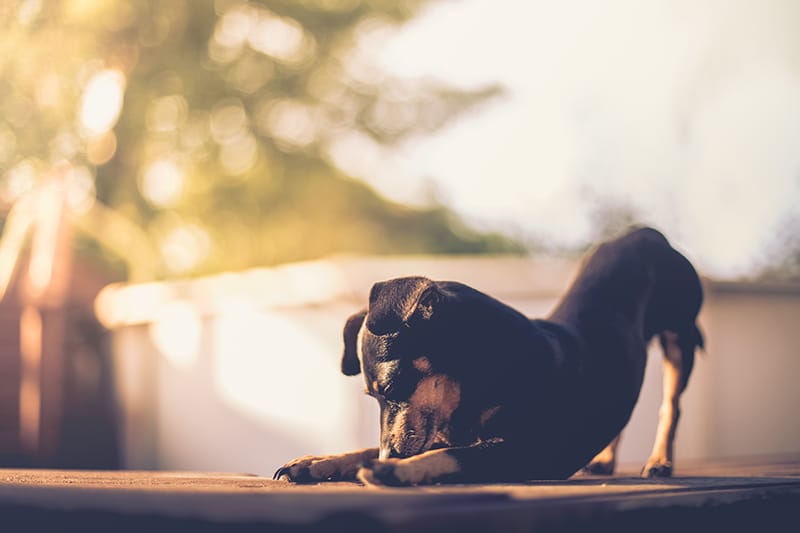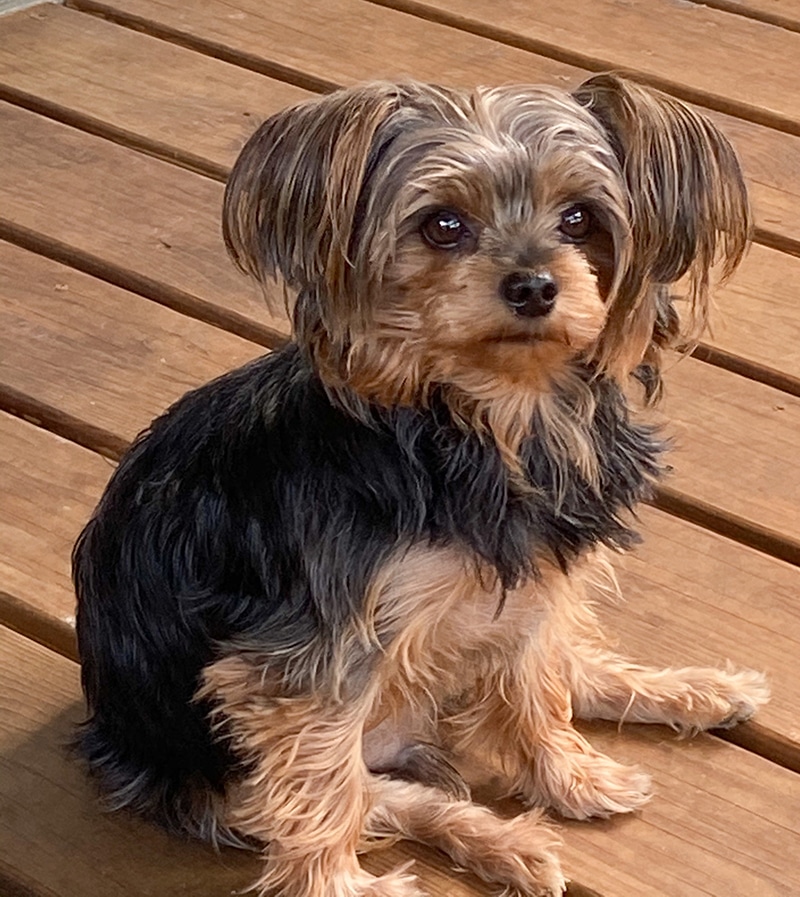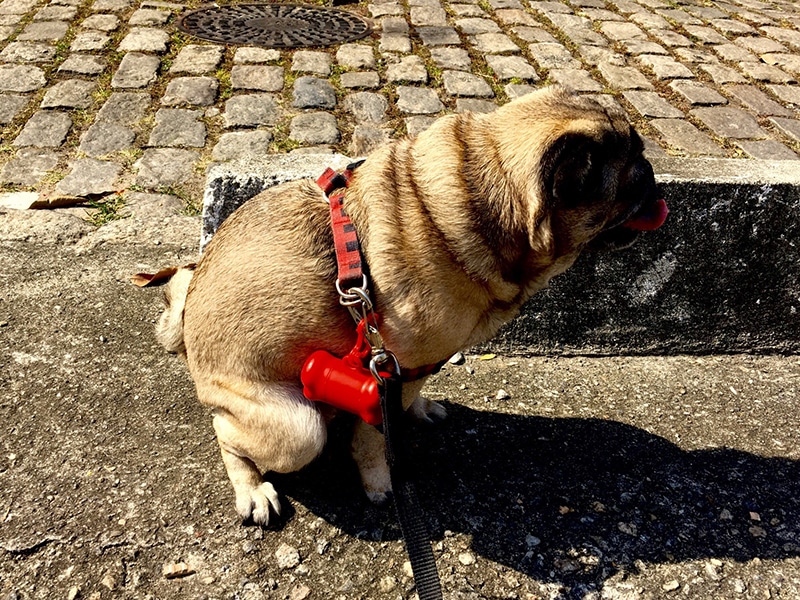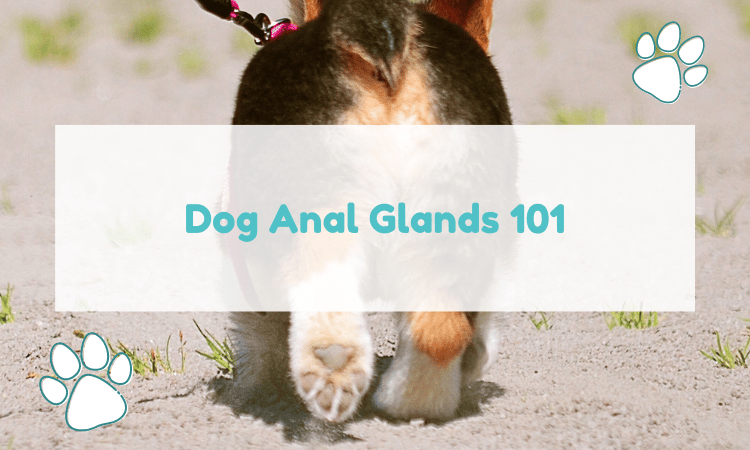If your pooch has ever done the butt scooting boogie, you probably know something about anal glands in dogs. Research shows that 5-12% of dogs experience trouble with their anal sacs. One of the most common Anal Gland issues called blocked Anal Glands.
Owners often realize there’s a problem because their pups start dragging their butt across the ground, or scooting. Other signs that may lead you to contact your veterinarian include excessive licking around the anus or noticing that your dog has difficulty defecating.
You may be wondering why dogs have anal glands if they can cause so much trouble. In this article, we’ll explain what these sacs are and why they exist. Then we’ll talk about the different problems that dogs can have with their anal glands, how you can recognize there’s an issue, and what you can do about it.
Anal Glands – What Are They and Why Do Dogs Have Them?

Anal glands or sacs are small pouches that are located between the muscle walls of the rectum. They are at the 4:00 and 8:00 positions on either side of the anus and secrete a pungent, brownish, oily substance.
Normally, the glands expel some of the fluid when your pooch passes poop. This action helps to lubricate the stool for easier defecation and also serves to mark your furry friend’s territory.
How Do Dogs Empty Their Anal Glands?
Ideally, your furbaby will empty or express his anal glands without your assistance. During the act of defecation, the feces push against the sacs and push the fluid out.
Dogs may also pucker their rectal muscles and self-express their glands when they are stressed or frightened. When everything functions according to plan, there’s no need to think about your pal’s glands.
Anal Gland Problems in Dogs

As long as your pooch has firm stools and expresses his glands, there’s nothing you need to do. But sometimes, there are complications. Whether your dog’s diet makes his pooh soft, inflammation restricts the ducts, or something else inhibits normal excretion, the sacs may not empty properly. When that happens, the remaining fluid can thicken so that it’s harder to expel. Over time this can lead to serious health issues.
Risk Factors for Anal Gland Problems
Some of the more common risk factors that can increase Fido’s chance of developing anal gland problems include:
- Chronic bacterial or yeast infections – deep skin infections can cause ongoing inflammation or damage that may restrict the anal gland ducts.
- Infestations from skin mites – like skin infections, these parasites can damage or occlude the ducts.
- Food allergies or hypersensitivities – pups with food allergies may have softer stools that don’t push against the glands to squeeze the oily secretions out.
- Atopic dermatitis – Allergic reactions to something in the environment can cause skin inflammation that may restrict or damage the anal gland ducts.
- Obesity – extra fat around the anus can serve as padding and reduce the pressure that the stool exerts on the anal sacs during a bowel movement.
- Hypothyroidism – dogs with low thyroid levels or depressed function often experience weight gain and can develop food hypersensitivities that cause soft stools or diarrhea. These symptoms may lead to impacted anal glands.
- Breed – Some breeds such as toy and miniature poodles, chihuahuas, cocker spaniels, and beagles have a higher risk of developing anal gland problems.
- Congenital risks – dogs born with a narrow duct system may be more prone to impactions.
How To Know If Your Dog Has an Anal Gland Problem?

You may be wondering how you can tell if your pup is experiencing anal gland problems. Fortunately, most dogs will exhibit several signs that demonstrate they’re uncomfortable. Many of these symptoms may also point to other issues.
However, if you know your furbaby is prone to anal gland problems or if these signs are repetitive, you should contact your veterinarian. A thorough exam can help you determine the root of the problem and get your pal some relief.
Scooting
Scooting or dragging the butt across the floor is one of the more noticeable signs that may indicate an anal gland problem. If you see your pooch doing this frequently, he’s telling you that there’s a problem back there.
Other Signs
While scooting is the most commonly known symptom, you may also see any of the following:
- Excessive licking around the hind end or anus
- Straining during defecation with or without crying/vocalization
- Swelling or lumps under the skin around the rectum at the 4:00 and/or 8:00 positions
- Blood or pus on the poop or around the anus
- Traces of blood/pus on bedding, the floor, or wherever your pooch was laying
Causes of Anal Gland Problems
Anal gland problems in dogs are a common yet complex issue, stemming from various causes. From gastrointestinal troubles to anatomical irregularities, understanding these underlying factors is key to addressing and preventing anal gland complications in our canine companions.
- Gastrointestinal disease – The primary cause of anal gland problems in dogs is poor digestive health. If your pooch has soft stools frequently, it can prevent proper emptying of the anal sacs and lead to impaction or abscesses.
- Allergies – atopic dermatitis and other allergies that cause inflammation in the rectal area can constrict the ducts so that the liquid can’t escape.
- Anatomy – If your pup’s glands are in the wrong position, or the ducts are too narrow, it can lead to anal gland impactions.
- Obesity – excess fat in the rectal area can constrict the ducts and cause incomplete expression.
- Iatrogenic – improper or frequent manual expression of the anal glands can damage the area and cause a build-up of scar tissue. This can lead to future anal gland issues.
- Other causes – Infections around the anus or cancer are other potential causes of anal gland disease.
Prevention and Treatment Options for Anal Gland Problems

When it comes to dog’s anal glands, the best treatment is an ounce of prevention. There are many things that you can do to help your pal defend against swollen or diseased anal sacs. For the most part, you’ll be able to take these measures at home. However, if you have any concerns, your veterinarian can help you.
We’ll take a look at what you can do to treat or prevent anal gland problems below. But first, let’s talk about the things you shouldn’t do:
Don’t!

Repetitively express your dog’s glands – You may have heard that if your pup has impacted anal glands, you can manually empty them by pressing against the sacs to release the stinky fluid.
Some groomers and veterinarians provide this service as a regular routine, and they may offer to show you how to do it yourself. It’s best to refuse the service because repeatedly pinching or squeezing the sacs can increase inflammation, which may cause damage, pain, and some other side effects. And if you do it too much, the body could become dependent on manual expression. It’s better to find ways to help your pal empty the glands himself.
Overfeed your dog – We’ve already mentioned that obesity can contribute to anal gland problems. Excess fat around the anus can constrict the glands or may reduce the pressure that feces exerts on the anal sacs. Either way, it may be difficult to completely empty the anal glands.
Do!

Consult with your veterinarian – Schedule an exam to confirm the diagnosis and talk with Fido’s doctor about treatment options if your dog has repetitive issues.
Add fiber – Extra fiber in the diet can help firm up the stools and keep them regular. Some fruits and vegetables such as Pumpkin are an excellent source of fiber for dogs. Consistent bowel movements provide natural pressure to express anal glands. Look for the best high fiber dog food-anal gland problems to support your pup’s digestive health.
Give supplements – Some supplements can help to reduce inflammation and promote digestive health.
- Omega 3 Fatty Acids – fish oil or another omega 3 fatty acid supplement for dogs helps to reduce inflammation and thus may prevent anal gland impactions.
- Glandex – Glandex is a veterinary-formulated supplement with ingredients that support healthy anal gland function.
- Probiotics and Prebiotics – Probiotics and prebiotics support healthy digestion and can help keep bowel movements firm and regular.
- Blood Protein Supplements – supplements with blood proteins contain immunoglobulins which may help to minimize inflammation and help the body’s healing process.
Exercise your dog – Not only does regular dog exercise help to manage your furry friend’s weight, but it also can help to open the anal sac ducts and stimulate more regular defecations. If your pooch isn’t accustomed to strenuous workouts, start with regular walks, and gradually build up to a more vigorous activity level.
Treat Allergies – If your pal suffers from skin or food allergies, the inflammation can contribute to swollen and occluded ducts. Try a hypoallergenic diet or an elimination diet to remove the offending allergen. If something in the environment is the source of the irritation, consult with your veterinarian about treatment options.
Apply Warm Compresses – If your pup has swollen sacs, you may be able to reduce his discomfort and help open the ducts by applying warm compresses of water or saltwater around the anal gland openings.
Veterinary Treatments – For pups with severe impactions, abscesses, or ruptured anal sacs, your veterinarian may need to prescribe antibiotics, drain and flush the glands, or possibly remove the glands surgically.
The Final Woof

They say an ounce of prevention is worth a pound of cure, and that’s certainly true when it comes to anal glands in dogs. If you have a pooch that has risk factors for anal gland problems, be proactive to help keep the sacs functioning properly.
You can do a lot by feeding a proper diet, including healthy supplements, and providing regular exercise for your furbaby. If Fido has any sensitivities, treat the underlying cause to eliminate inflammation. These simple steps can go a long way to keep your special pal’s happy and healthy.


